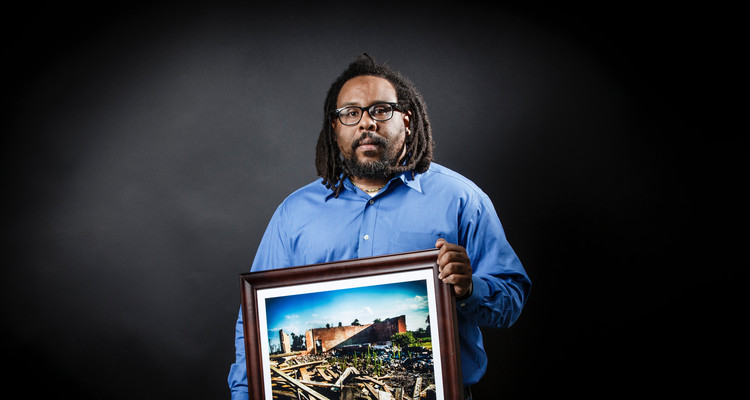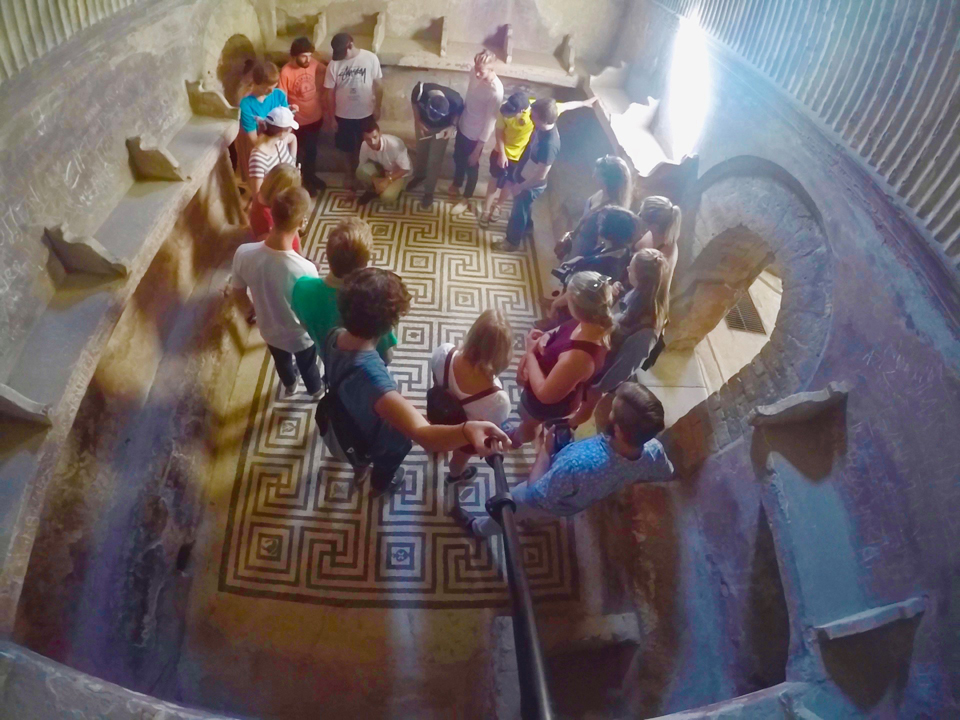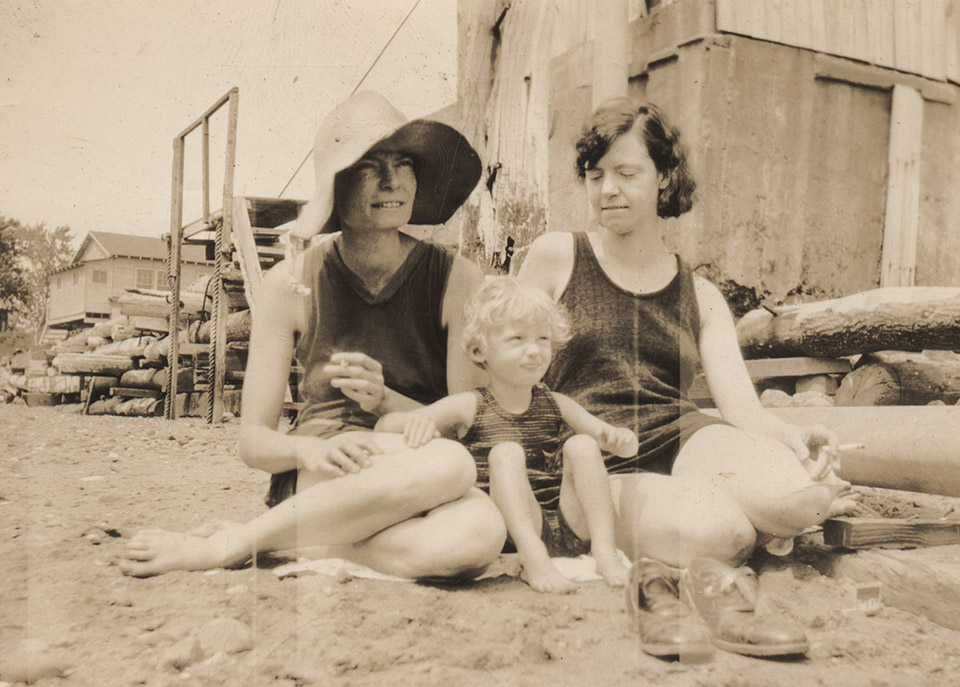On the evening of May 2, 2011, U.S. Army Corps of Engineers officials issued an order to operate the Birds Point-New Madrid Floodway. Located in the southeastern corner of Missouri, this water-control mechanism was designed to alleviate flooding of land and communities along the Mississippi River in the event of a 1,000-year flood. It only had been operated one other time – in 1939.
The order meant that later that evening the Corps would use explosives to breach the front-side levee of the floodway. The blasts would create a two-mile crevasse allowing 550,000 cubic feet per second of water to divert into the floodway, completely submerging nearly 200 square miles of farmland and one small African-American town with more than 20 feet of water.
As Corps officials announced their decision, residents of the town – Pinhook, Missouri – raced to salvage their belongings. Without official warning or governmental assistance, residents had time to rescue only the essentials. By the time the explosion echoed across the planted fields that night, residents of Pinhook had fled their town, surrendering most of what they owned to the raging waters.
Six months later, in October 2011, my friend and former teacher, Elaine Lawless, a professor of English, folklore and women’s studies at the University of Missouri, where I completed my doctoral degree, approached me during a conference at Indiana University to talk about a new project she was considering. Elaine asked me if I had ever heard of the town of Pinhook, Missouri. I told her I hadn’t. She asked me if I’d heard about the Heartland Flood, which had occurred earlier that spring and had affected several states along the Mississippi and Ohio rivers. I told her I had read a little bit about it, but I wasn’t especially aware of it. She then explained to me that a few weeks before, while visiting her mother in Benton, Missouri, the town where she grew up just a few miles away from Pinhook, she had read in a local newspaper about Pinhook’s destruction. It shocked her that she had never even heard of an African-American town existing near the mostly white area where she had grown up. “We have to find out what happened,” she told me. “We have to go hear their stories. ... Will you help me?” she asked.
I first visited Pinhook with Elaine the next spring, in April 2012. Even then, nearly a year after the breaching of the levee, the devastation of the town was plainly visible. Skeletons of houses sat everywhere – permanent and mobile homes alike. They all had been decimated by the force of the water: Walls were peeled open like tin cans, windows broken, roofs lifted off and many houses were pitched off their foundations entirely.
Elaine and I ventured inside the vacant house of displaced resident Aretha Robinson as we waited to meet for the first time with her daughter Debra Tarver, the chairperson of Pinhook. We encountered a scene we weren’t expecting – a house filled with mud and furniture and personal effects, as if there had not been time to salvage treasured possessions. Clothes covered in dried mud hung in the closets. Knick-knacks caked with dirt lay strewn on the floor. Diplomas and pictures hung askew on the mud-streaked walls. When Debra arrived and began to tell us about the days leading up to the breach, she explained that Pinhook residents never were given an official warning that the floodway would be “operated.” After talking to several sources and waiting endlessly for official notification, she finally decided on her own to evacuate the town after receiving a phone call from her brother in New York who told her he was hearing that officials were preparing to flood Pinhook.
Without assistance from anyone, Debra and other residents began to organize the evacuation just two days before the levee was breached. They evacuated many elderly residents who could not have gotten out on their own. Unable to find trucks to rent, residents settled on tractors, pick-up trucks and whatever other means they could find to salvage as many of their possessions as possible. They were forced to leave behind vehicles, farming equipment, electronics, clothes, photos, keepsakes and important documents. They began their displaced lives with mostly nothing. They would have to start over.
In their campaign to relocate and rebuild their community, residents of Pinhook have faced several challenges. Pinhook landowners, who purchased land inside the floodway in the early 1940s (when floodway land was the only land available to black farmers at the time), never have been entitled to remuneration of any kind. One-time easement payments were made in the early 1930s to then landowners, which guaranteed the right of the Corps to operate the floodway whenever extreme flood conditions were met. According to the federal government, the activation of the floodway in May 2011 was a legal action under those conditions, and the government maintains that it owes the people of Pinhook nothing.
The bottom line is that more than three years after the intentional destruction of their homes, not one resident of Pinhook has rebuilt or rehabbed a residence with assistance from the government. Nor has any money been secured to provide for Pinhook residents to relocate their town outside the floodway. Debra repeatedly has submitted multiple detailed applications for FEMA Community Development Block Grants that could pay for the land that Pinhook sat on – but not the houses that were destroyed. Debra and other residents are currently in discussions regarding the amount that FEMA might pay for each property. This amount will certainly not be enough to cover the costs of rebuilding the town outside the floodway. So while survivors of disasters such as Hurricane Sandy have received assistance in excess of a billion dollars, Pinhook residents, whose homes were destroyed by the federal government, still have received nothing.
Although a handful of local journalists and newspapers have covered the flooding of Pinhook and the displacement of residents like Debra and her mother, Aretha (most notably the Columbia Missourian, the St. Louis Beacon and the Southeast Missourian), most only have written about the initial levee breach and then moved on. At the national level, the story of Pinhook has gone largely unnoticed.
Elaine and I have worked with Debra and other displaced Pinhook residents for two and a half years documenting their untold stories, and we have noticed that their narratives of the disaster serve multiple purposes, foremost of which is simply to call attention to the destruction of their town. For Pinhook residents, the general lack of awareness about what happened to them three years ago has made their personal experience narratives extremely important to preserve and to share. Residents we have interviewed speak about Pinhook and what happened to it in an effort to describe a place and a way of life that can no longer be witnessed at the place where they once lived. These stories empower residents to accomplish the difficult work that still lies ahead.
As folklorists, Elaine and I know that Pinhook narratives also serve to preserve community bonds. Pinhook residents we have interviewed almost never talk as if their community is gone. They lament that their houses have been destroyed or that they cannot return home, but their understanding of themselves as a community has not been eroded by what the Corps did to them. In fact, for many residents, their bonds only have been strengthened. The narratives of Pinhook residents function as testimonies of survival and resilience.
Time and again we heard the mantra: “We don’t quit around here.” Even the origin story of the Pinhook, which we were told by multiple residents, attests to that ideal: Many spoke about how they themselves or their parents had arrived in the area of Pinhook nearly 75 years ago to find an untouched, largely inhospitable piece of land. Those first residents, who arrived in the early 1940s seeking land to farm and the freedom to farm it, worked around the clock, nearly 24 hours a day, to carve a community out of the dense, swampy forest dominating the landscape. They didn’t quit in the beginning, and they don’t intend to quit now.
Visit RebuildPinhook.wordpress.com to read more about the destruction of Pinhook, see official documents and view the documentary short film “Taking Pinhook,” produced and directed by Todd Lawrence and Elaine Lawless.





